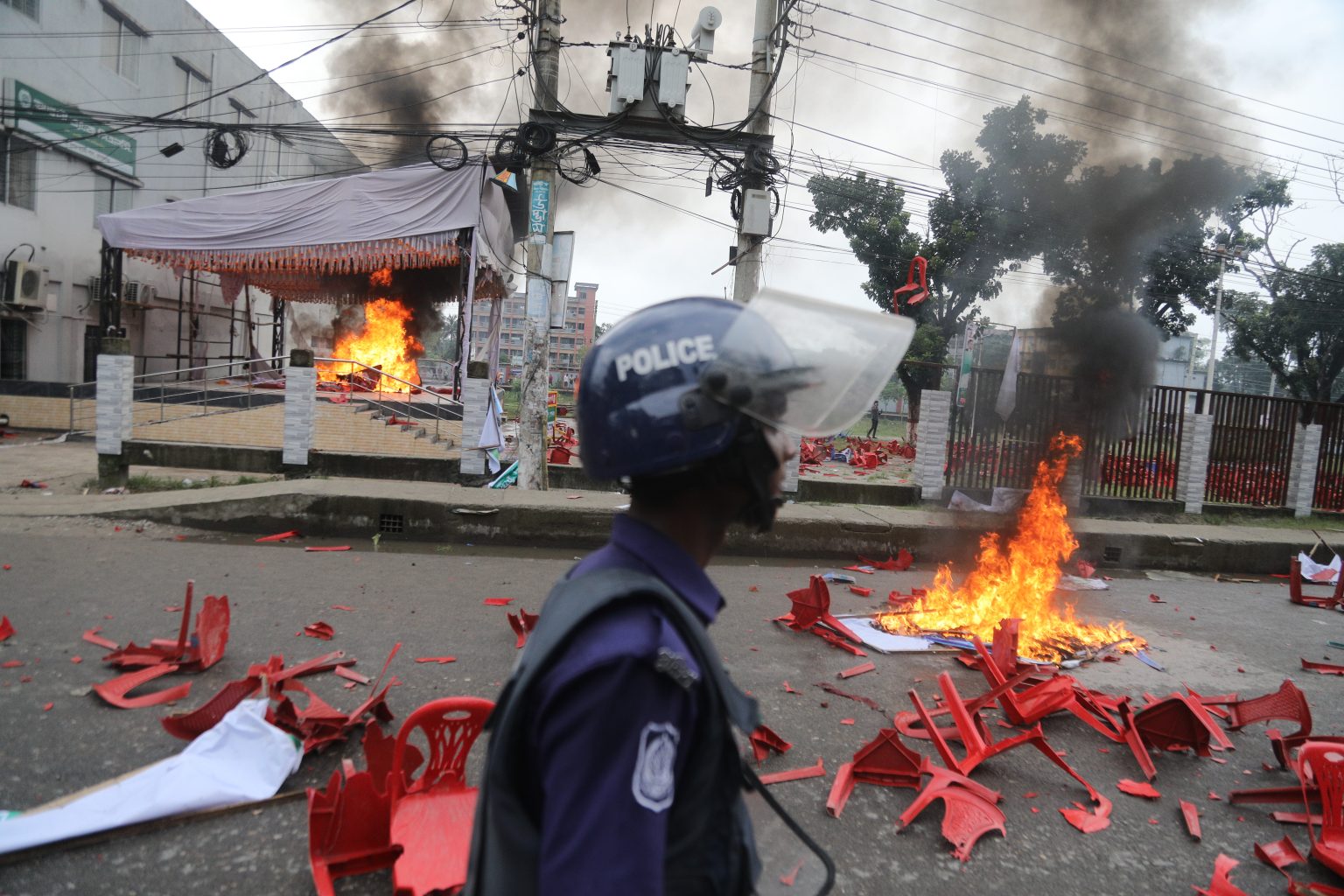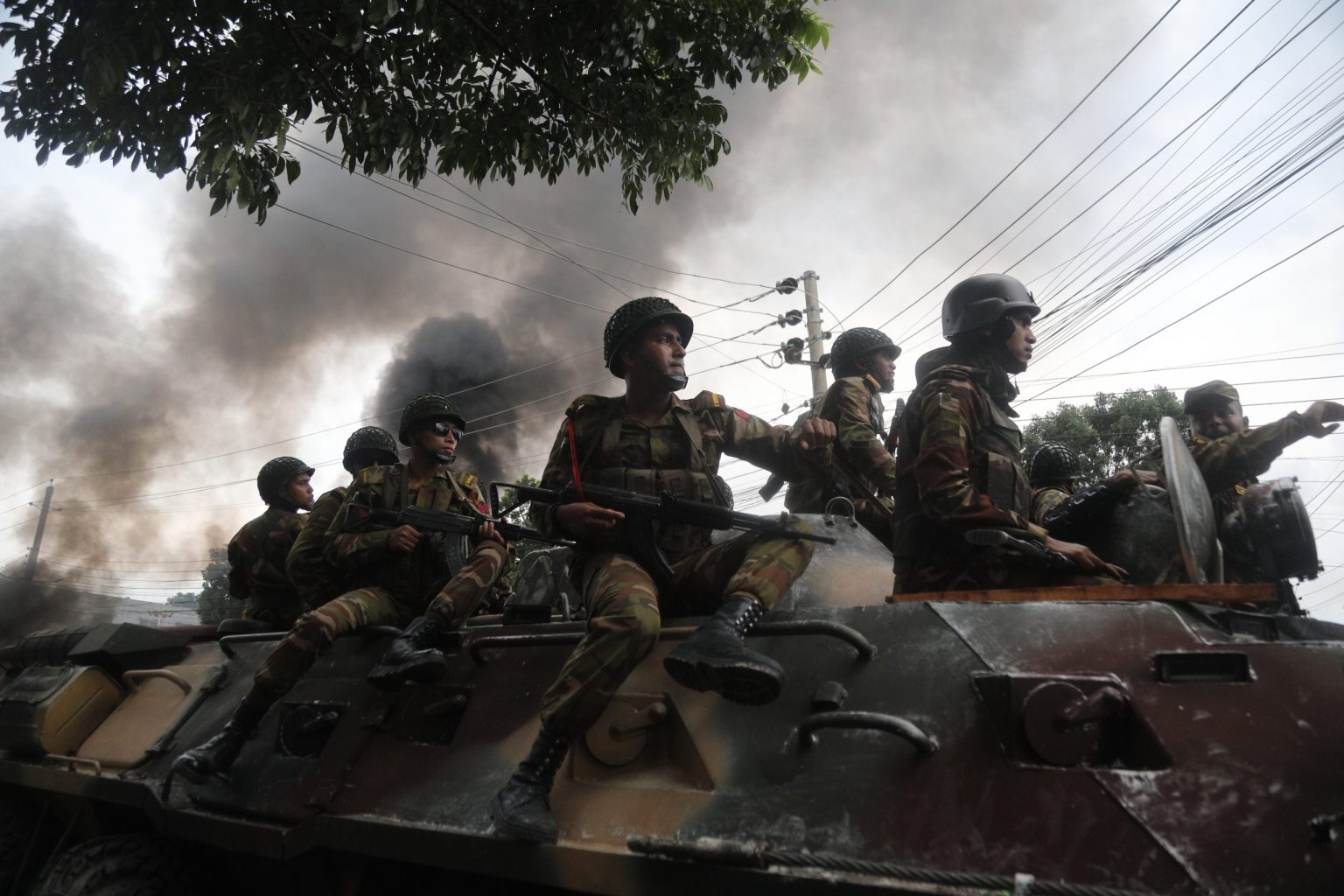The bloodshed in Gopalganj could have been avoided had the interim government’s high-ups and National Citizen Party (NCP) leaders paid heed to the repeated warnings by intelligence agencies about violence ahead of the party’s programme in the district.
Documents from multiple intelligence agencies, verified by Times of Bangladesh, clearly indicated that the tragic death of five people, the injuries of dozens, and widespread destruction were the result of the NCP’s sheer disregard and the government’s indifference.
The streets of Gopalganj, a political heartland of the former ruling Awami League, turned into a battlefield on 16 July when the NCP pushed forward with its suddenly called “March to Gopalganj” programme, bypassing the repeated warnings of attacks.
“The district police informed several senior NCP leaders about the security risks. They didn’t care about the warnings,” according to a report from the Special Branch of Police.
On the day of the violence, the local administration also warned NCP leaders about the risks of holding the rally, scheduled for 10:00am. They were held back at the Circuit House until afternoon. By then, a police van had been torched and the vehicle of the Upazila Nirbahi Officer was vandalised, signalling potential attacks if the NCP went ahead with its rally.
Despite a tense situation, NCP leaders moved out of the Circuit House and proceeded to the rally venue, which was soon under attack, triggering violent clashes between the supporters of the Awami League and the law enforcement agencies.

An assessment of intelligence documents and insights from insiders within the agencies suggest that the violence was foreseen days, even hours, before it occurred, and could have been avoided.
Times of Bangladesh reviewed reports from multiple agencies — including the Special Branch (SB), the National Security Intelligence (NSI), and the Directorate General of Forces Intelligence (DGFI) — all of which issued explicit warnings at least ten days prior to the NCP’s planned “March to Gopalganj.”
These reports, sent to the home ministry and police headquarters, identified three specific flashpoints along the procession’s route: the entrance to Kotalipara, the vicinity of the district police lines, and a nearby junction.
They also anticipated that mobs would be mobilised in Kazulia, Kati, and Majhigati areas.
The agencies warned that mobs could be incited to hurl bricks and projectiles from behind women and children, a tactic aimed at provoking a harsh law enforcement response that could be exploited in both domestic and international media.
Despite this, the NCP leadership pressed on with its programme. Intelligence evaluations further indicate that certain hardline NCP leaders played a provocative role in escalating the tension on the ground.
On 15 July, a day before the march, tensions surged after a viral video featuring exiled prime minister Sheikh Hasina circulated on social media, stirring further unrest.
In response, law enforcement and intelligence agencies reassessed risk factors at an emergency meeting attended by the home adviser, police chief, and top regional police officials on 16 July.
Rather than taking measures that could have defused the tension and avoided violence, the government allowed the NCP to proceed with its programme, deploying heavy security forces in the process.
Moreover, two interim government advisers – Asif Mahmud Sajib Bhuiyan of the LGRD ministry and Jahangir Alam Chowdhury of the home ministry – monitored the developments in Gopalganj from a special control room in Dhaka.
The country’s leading party BNP views the violence as a strategy to sabotage the upcoming general election. “It was a state-backed show of force to create chaos and derail the democratic process,” BNP Standing Committee Member Salauddin Ahmed told Times of Bangladesh.
Echoing this view, Masud Imran Mannu, a professor in the Department of Archaeology at Jahangirnagar University, described the incident as “an engineered riot cloaked in the language of political rights.”
He said, “It was designed to provoke, not to protest. The goal was to create instability, not resolve it.”
Speaking to Times of Bangladesh, security analyst Major General (retd) Sarwar Hossain said the Gopalganj incident exposed a serious failure of governance. “The army and BGB acted professionally, rescuing leaders under attack. But the presence of suspended Awami League and Chhatra League activists, and their violent actions, escalated the situation.”
“The administration and police, despite prior intelligence, failed to act — suggesting negligence or bias. This is deeply troubling and must serve as a wake-up call,” he added.
Nasiruddin Patwary, chief coordinator of the NCP, told Times of Bangladesh that the party leaders continued their march in Gopalganj after their local leaders received the necessary security clearances from law enforcement agencies.
“One of our senior leaders, Anik Roy, is responsible for organising our march programme across the country. He also informed our leaders of the security clearances, after which we decided to go ahead with our march in Gopalganj,” he said.
Following the violence, the home adviser told the press that while the government had intelligence on potential unrest, “the scale was greater than expected.”
The NCP, known as the “king’s party,” has been enjoying state protocol and tight security protection, drawing criticism from political parties and civil society.


